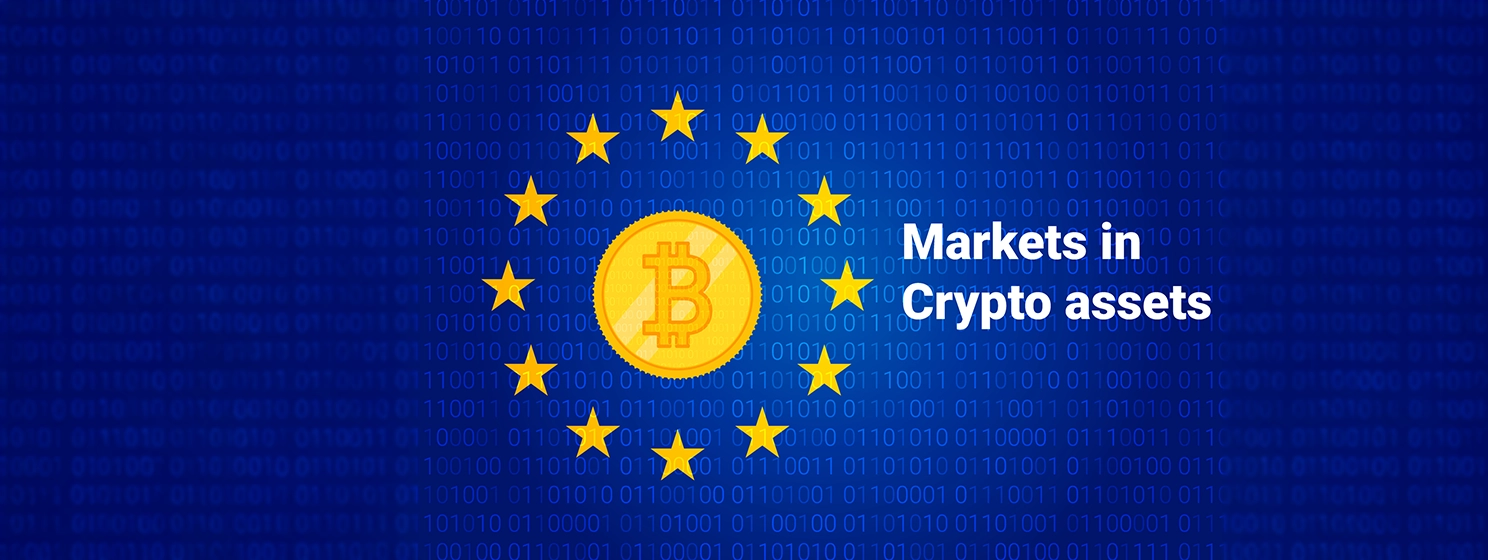|
Getting your Trinity Audio player ready...
|
Summary:
- MiCA has clearly defined which businesses need to get licensed to operate in the EU and —in theory— which path they can take to do so
- However, inconsistent implementations of the EU MiCA licensing regime have led to what France’s AMF regulator has called a ‘race to the bottom,’ where non-EU companies pick the country with the easiest licensing process in order to gain access to the entire EU market
- These concerns have led France to threaten to refuse to honour licences granted in other EU jurisdictions, while it has joined Italy and Austria in proposing that the EU take on more direct regulatory control of digital asset companies.
After a process that has spanned years, the EU’s sweeping legislative salve for the digital asset industry is now (mostly) in force. Almost a year on, how has the Markets in Crypto-Assets Regulation (MiCA) changed the digital asset industry in Europe?
- MiCA is changing the digital asset industry in Europe
- Brief explanation about MiCA
- The effect of MiCA so far
- MiCA foundations
It will take time to conclusively assess MiCA’s impact, but looking at the state of digital asset regulation in Europe in 2025, what’s striking is how much it’s still evolving—not just in the implementation of MiCA but also in the various responses to it.
For global digital asset service providers, MiCA has provided clear rules of the road towards getting regulatory approval to operate in the EU. Best of all, providers only need approval from one national regulator in the EU in order to serve the entire EU market.
For EU nations and regulators—both at the EU level and the national one—it provides a clear mechanism by which to control and monitor the provision of digital asset services within the jurisdiction.
But there are also fears that the combination of broad-based, EU-wide rules and the level of discretion afforded to national regulators in how they are implemented may cause a ‘race to the bottom,’ as EU regulators compete to implement the most attractive (to digital asset service providers) regime with which to lure overseas service providers, potentially undermining the aims of MiCA.
MiCA: a brief overview
First: what did MiCA actually do, and what does it mean for digital asset companies wanting to do business in the EU?
Officially, MiCA was finalized and passed into law in 2023. Practically, the picture is a little more convoluted. The rules were set to enter into force on a rolling basis, with the first wave —relevant to stablecoins—coming into effect on June 30, 2024. The rest of MiCA is meant to have taken effect by the end of 2024, but even then, service providers in the jurisdiction have until July 2026 to obtain authorization under MiCA.
First, MiCA establishes definitions for what constitutes a crypto-asset and thus which assets (and the services linked to them) fall within the scope of the law. A ‘crypto-asset’ is defined under MiCA as “a digital representation of value or a right that can be transferred and stored electronically, using a distributed ledger or other similar technology.”
This definition is further broken down into three types of ‘crypto-assets’: electronic money tokens (EMTs), asset-referenced tokens (ARTs), and crypto-assets other than EMTs or ARTs that are not excluded under MiCA (utility tokens being the prime example). Tokens that do not fit within these definitions are not subject to MiCA rules:
- Asset-referenced tokens (ARTs): digital assets whose value is pegged to another value, right, or combination thereof.
- Electronic money tokens (EMTs): these are stablecoins pegged to official currencies.
- ‘Other’: essentially tokens that have not been explicitly excluded from MiCA and do not count as either ARTs or EMTs. Practically, this means utility tokens.
As for the exclusions, unique, non-fungible tokens are not captured by MiCA; non-transferable tokens, such as those associated with loyalty programs, or assets that already fall under existing financial services rules, such as securities.
It’s important to understand these definitions because the meat of MiCA concerns a newly created category of regulated entities called Crypto-Asset Service Providers (CASPs). CASPs are businesses that provide services in connection with a regulated crypto-asset. Under MiCA, they must obtain a license from a national regulator to legally operate in the EU.
In practical terms, this means that if you’re an exchange or custodian, you must be licensed to operate within the EU. Importantly, under EU ‘passporting’ principles, CASPs need to be licensed by only one national regulator to provide services throughout the EU.Effect so far
Research by Circle’s Director of EU Strategy, Patrick Hansen, shows that since the legislation came into force on December 30, 2024, 54 MiCA licenses have been granted. Thirty-nine of these went to CASPs and 14 went to stablecoin issuers.
Netherlands and Malta issued their first licences on the day the legislation went into force, with Germany following shortly thereafter in January of this year. To date, Germany and the Netherlands have granted the most licences, issuing 12 and 11, respectively. Malta is third, with five.
One of the benefits of the EU’s rulemaking in this regard is the ‘passporting’ principle, which means that a company that gets licensed in one EU country is effectively licensed to operate throughout the EU. For service providers, this can be extraordinarily convenient: gaining approval from one regulator in one country opens your business to the entire EU.
In practice, this is proving to be a pain point for MiCA efficacy. Part of this is due to an inherent feature of EU lawmaking: broad primary legislation issued at the Union level leaves the finer details of implementation to national legislators. In other words, EU countries have ample discretion in implementing MiCA directives.
On the one hand, this creates flexibility, allowing for central rulemaking that doesn’t try to fit a square peg into the round hole of local environments.
At the same time, inconsistent approaches to implementing MiCA can undermine the legislation’s overall effect. The aforementioned ‘passporting’ of licensing can exacerbate this: international companies looking to serve the EU will naturally gravitate to whatever national regulator they think will give the easiest ride.
This particular tension has already been put under the spotlight. In June, Reuters reported that senior EU regulatory officials were concerned about the speed and volume at which the Malta Financial Services Authority (MFSA) had been granting licenses.
This led to a review by the European Securities and Markets Authority (ESMA), which concluded in July that “the overall authorisation process should have been more thorough and conducted on a sufficient time to allow MFSA to properly assess compliance against the MiCA framework.”
MiCA foundations may be suspect
Though the ESMA review was careful to say that the MFSA had “built a good level of expertise in this sector and has sufficient supervisory resources for CASP authorisations and supervision,” its conclusions will give life to fears that MiCA passporting has created a race-to-the-bottom on the part of EU regulators to lure global business to their country.
France‘s national financial regulator, the Autorité des marchés financiers (AMF), has already made noises to this effect, with an AMF official being directly quoted in the Reuters report on Malta.
Troubling for MiCA (and the EU), France has already raised the possibility of refusing to honour the ‘passporting’ allowed by MiCA. In September, not long after ESMA released its review of Malta, AMF president Marie-Anne Barbat-Layani gave a stark warning in an interview with Reuters:
“We do not exclude the possibility of refusing the EU passport. It’s very complex legally and not a very good signal for the single market – it’s a bit like the ‘atomic weapon’… but it’s still a possibility we hold in reserve.”
That quote will have sent alarm bells ringing in Brussels. A refusal to honor a license granted elsewhere in the EU would undermine the efficacy of MiCA as a whole. Not only that, it could shake the confidence of overseas digital asset companies seeking clear and certain paths to EU-wide compliance.
This also apparently emboldened France to join Italy and Austria’s own financial regulators, who have raised the possibility of national regulators transferring certain supervisory powers— particularly over digital assets—to a centralized EU body such as the ESMA. According to Reuters reports, the three regulators signed a position paper—one that explicitly cites the Malta ESMA review—calling for the transfer.
France, Italy, and Austria do not represent the entirety of the EU. For instance, in an apparent pushback to such suggestions, the Prime Minister of Luxembourg penned an op-ed in the Financial Times which expressed support for the decentralized supervisory system set out in MiCA. But the three voices are likely to be influential on Brussels, particularly given France’s recent threats.
One of the remarkable things about the calls from France, Italy, and Germany is that—contrary to bringing greater certainty to digital asset markets—MiCA is having something of a destabilizing effect on EU regulatory practices that might stretch beyond the industry.
As the AMF president put it, reaching the point where a prominent EU member state refuses the passporting envisioned by MiCA is not a good signal for the single market.
The post-MiCA landscape, clearly, is very much still emerging.
Watch: Breaking down solutions to blockchain regulation hurdles

 12-09-2025
12-09-2025 





